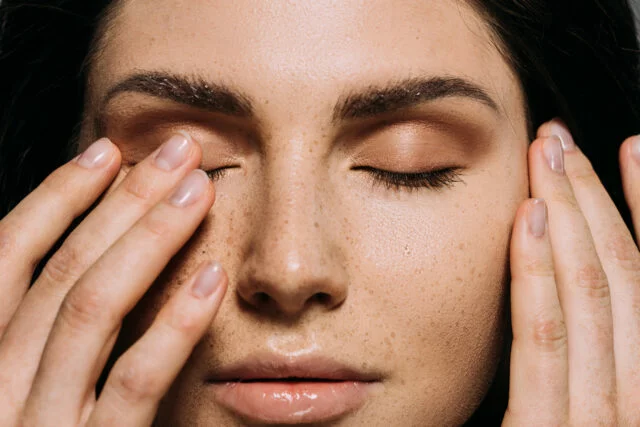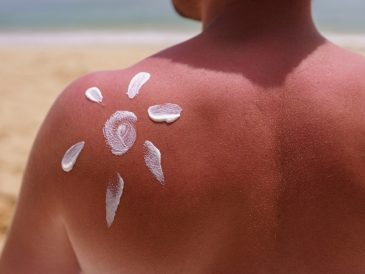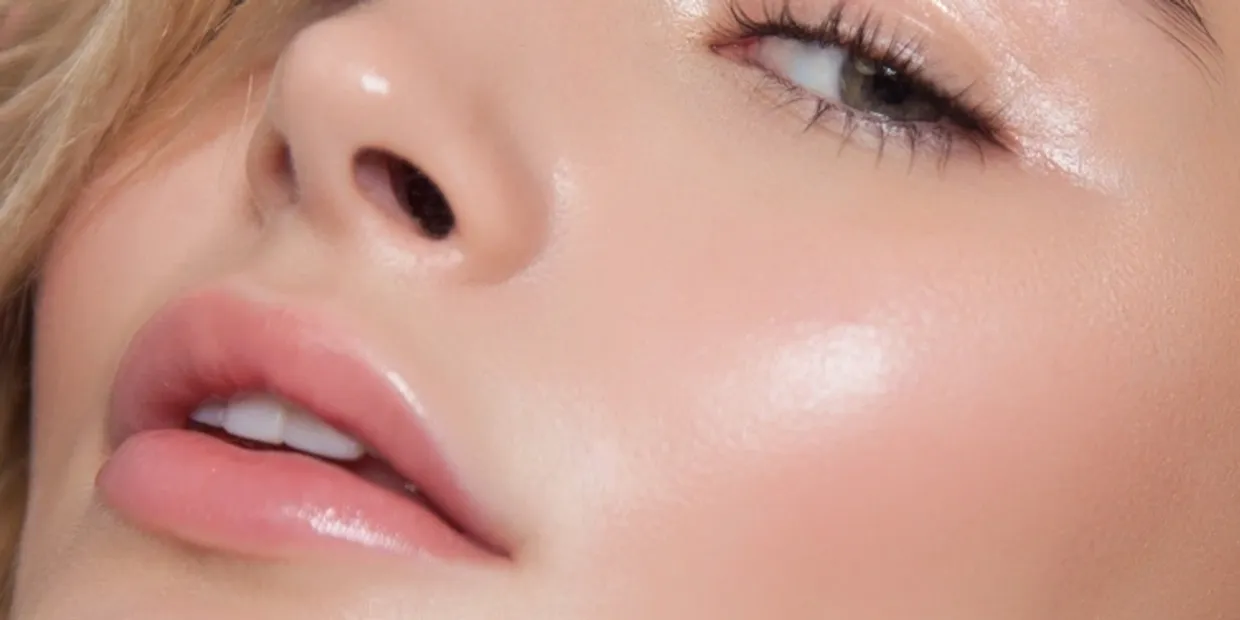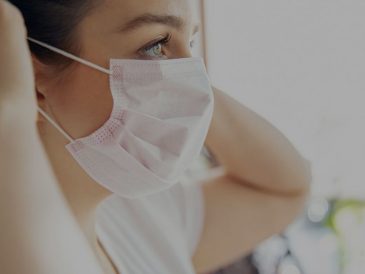Post-inflammatory hyperpigmentation, commonly known as hyperpigmentation caused by inflammation, is a type of hyperpigmentation that can affect the face and body. It typically appears in response to inflammation (such as acne, atopic dermatitis, or psoriasis) or injury (for example, triggered by dermabrasion, chemical peels, or laser therapy).

Table of Contents
Signs, triggers and available treatments in relation to post-inflammatory hyperpigmentation
Hyperpigmentation appears when internal or external factors cause an increase in melanin production. The consequence is a change in skin color, more frequently in areas exposed to the sun. There are several forms of hyperpigmentation, namely pigment spots (senile spots and freckles), melasma and post-inflammatory hyperpigmentation (PIH).
Post-inflammatory hyperpigmentation appears in the form of flat spots of changed color. The color of these macules can be pink to red, brown or black, depending on the skin tone and the depth of the color change. They may look like small freckles with a changed color or larger spots of darker skin, and they may be bright or take on a “new” skin-like appearance.
PIH often affects people with acne and can sometimes be triggered by cosmetic procedures, such as dermabrasion, chemical peels, or laser therapy. Although all skin types can be affected by post-inflammatory hyperpigmentation, it is more prevalent in darker skin tones. In fact, people with darker skin go to the dermatologist more often for PIH than for any other condition. Men and women are equally vulnerable to post-inflammatory hyperpigmentation.
If a pigment spot changes size, shape, color, or is itchy or bleeding, you should see a dermatologist in order to exclude a malignant process.

What causes post-inflammatory hyperpigmentation?
When an injury, rash, blemish or any other type of influence causes inflammation in the skin, it causes melanocytes, the melanin-producing cells, to release excessive melanosomes (pigment granules). These melanosomes contain tyrosinase (a pigmentation enzyme that initiates melanin production) and synthesize melanin. This is responsible for the color of the skin and hair. The excessive pigment granules darken and change the color of the previously injured area, remaining there long after recovery from the initial injury.
A post-inflammatory hyperpigmentation spot often goes unnoticed as a result of an inflamed acne lesion.
HPI spots can appear from completely insignificant papules or pimples, just above more serious lesions. That is, the greater the inflammation, the more evident the HPI spot will be, both in terms of size and color. If a pimple is squeezed or punctured, the possibility of post-inflammatory hyperpigmentation will increase.
Although it is not a cause of PIH, the sun can aggravate the symptoms, darkening the affected pimples and prolonging the time until they disappear.
Post-inflammatory hyperpigmentation does not cause scar retraction and, even without treatment, will improve over time. Although recovery times are variable, on average it can take between 3 and 24 months before darkened areas resolve. However, in some cases this time may be longer. The timing depends on the difference in skin tone between the natural skin tone and the darkened marks: the greater the difference, the longer it will take for the tones to rebalance. Treatments are available that can improve and speed up this recovery time.
What treatments are available for post-inflammatory hyperpigmentation?
Dermatologists handle two main concepts: the elimination of skin color change caused by inflammatory hyperpigmentation and the regulation of signs.
Elimination
Removal by laser therapy, intense pulsed light or chemical peel; eliminates hyperpigmented skin cells to regenerate new skin without hyperpigmentation. It can be expensive, invasive, and actually make the process worse. Potential side effects include inflammation, irritation, and a burning sensation.

Chemical peels, for example, AHA
The dermatologist applies an acid solution (glycolic acid (AHA)) to the affected areas to remove layers of skin. At first, vesicles appear, to then reveal “new” skin, without spots, underneath.
Laser Therapy (Fraxel, Erbium YAG) and Intense Pulsed Light (IPL)
Laser therapy and pulsed light treatments tend to be more precise than chemical peels, as they use targeted high-energy lights to access affected areas. The skin can be treated at a superficial level (epidermis) or deeper (dermis) depending on the intensity of the hyperpigmentation.
Regulation
Regulation is based on prescription medications or dermocosmetics to inhibit melanin production and even out skin tone, lightening the darkest spots so that they match normal skin pigmentation.
A number of topical, medical or skin care products are available for post-inflammatory hyperpigmentation and generally contain one or more of the following components:
- Hydroquinone 2-4% (prescription only): This is a powerful skin whitening agent whose use in cosmetics is banned in most of the EU due to concerns related to potential toxicological risks. However, it is still used in the US. The highest concentration (>4%) is available only by prescription, while lower concentrations (<2%) are used in dermocosmetics.
- Arbutin is a key component in many Asian skin whitening products and a natural source of hydroquinone. Although it is weaker and less effective than industrially produced hydroquinone, similar fears have been raised regarding its safety.
- Kojic acidis a product derived from Japanese rice wine, sake. Although it is natural, its effectiveness as an inhibitor of melanin production is doubtful and it has been banned in many countries.
- Glycolic acid(or hydroxyacetic acid) is the acid used by dermatologists in chemical peels. It is a common active ingredient in many topical creams for hyperpigmentation.
- Although retinoic acidhas been proven to be effective, it can cause some side effects, including irritation and increased sensitivity to the sun (which is already a problem in people with post-inflammatory hyperpigmentation). Since some potential link with congenital anomalies has been observed, pregnant or lactating women should refrain from the application of retinoic acids.
- It has also been confirmed that vitamin C derivatives are relatively effective against post-inflammatory hyperpigmentation. They are frequently used together with other active components.

B-resorcinol
A very effective component to reduce melanin production is B-resorcinol or butylresorcinol. It works by inhibiting tyrosinase, the enzyme that forms melanin.
Those affected by post-inflammatory hyperpigmentation should keep in mind that:
UV rays are very important influence of the sun on the skin. Given the likelihood that sun exposure will exacerbate symptoms, at the same time as trying to avoid the sun, daily application of a broad-spectrum sunscreen, with a high factor is recommended as part of a daily cleansing and care regimen.
- Results cannot be expected to appear overnight. Treatments may take several weeks before any noticeable difference appears. Consequently, consistency, patience and persistence are very important.
- Post-inflammatory hyperpigmentation may require medical care. If sufferers are concerned about the size, shape or color of any dark patches, it is worth consulting a dermatologist or pharmacist.





1 Comment
[…] Previous Article […]